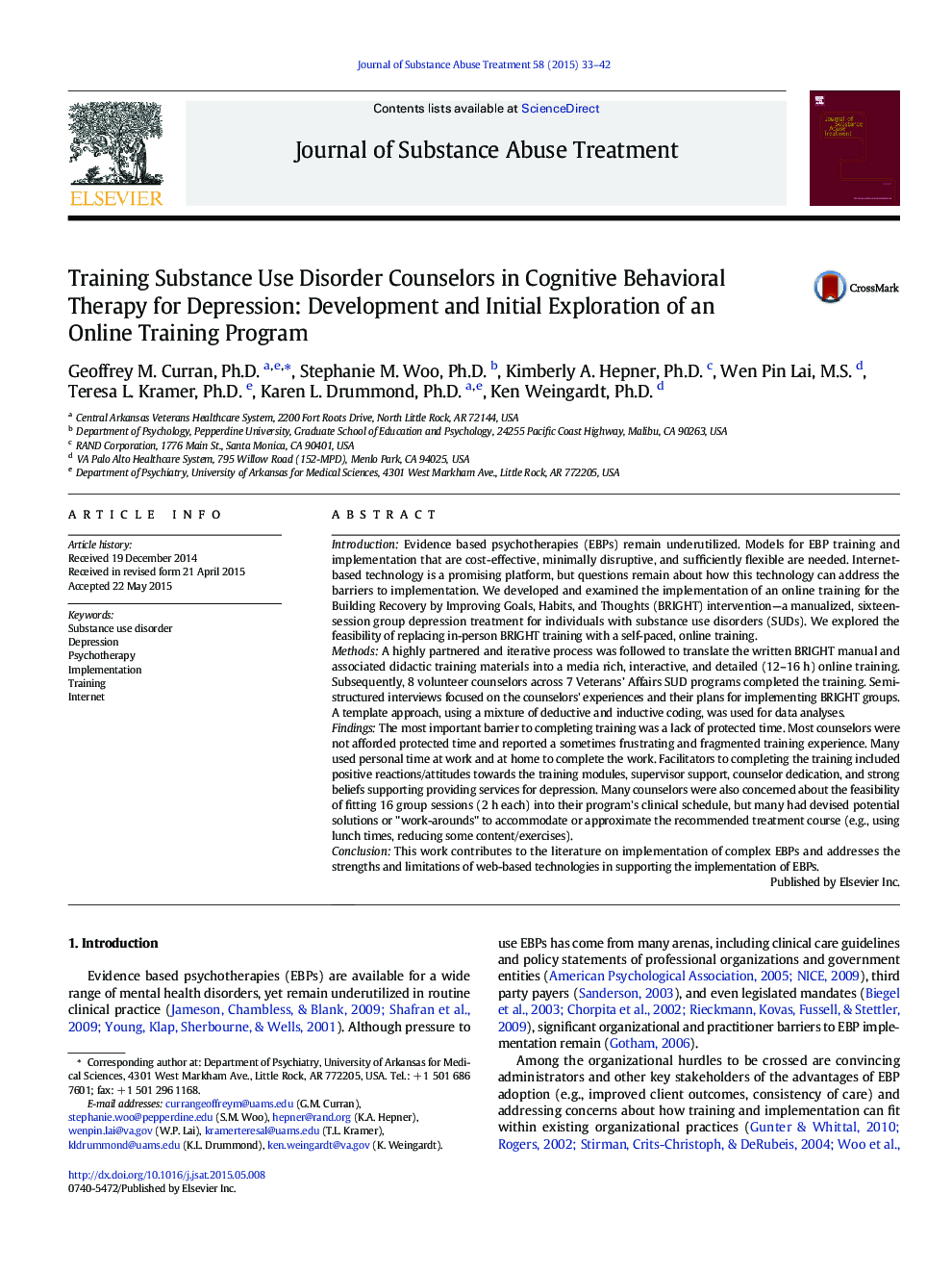| Article ID | Journal | Published Year | Pages | File Type |
|---|---|---|---|---|
| 328783 | Journal of Substance Abuse Treatment | 2015 | 10 Pages |
•We developed an online training group depression treatment for individuals with SUDs.•We explored implementation of the online training among VA SUD clinicians.•The key barrier to completing training was a lack of protected time during work hours.•Facilitators to completing training were supervisor support, clinician dedication, and strong beliefs supporting providing services for depression.
IntroductionEvidence based psychotherapies (EBPs) remain underutilized. Models for EBP training and implementation that are cost-effective, minimally disruptive, and sufficiently flexible are needed. Internet-based technology is a promising platform, but questions remain about how this technology can address the barriers to implementation. We developed and examined the implementation of an online training for the Building Recovery by Improving Goals, Habits, and Thoughts (BRIGHT) intervention—a manualized, sixteen-session group depression treatment for individuals with substance use disorders (SUDs). We explored the feasibility of replacing in-person BRIGHT training with a self-paced, online training.MethodsA highly partnered and iterative process was followed to translate the written BRIGHT manual and associated didactic training materials into a media rich, interactive, and detailed (12–16 h) online training. Subsequently, 8 volunteer counselors across 7 Veterans’ Affairs SUD programs completed the training. Semi-structured interviews focused on the counselors' experiences and their plans for implementing BRIGHT groups. A template approach, using a mixture of deductive and inductive coding, was used for data analyses.FindingsThe most important barrier to completing training was a lack of protected time. Most counselors were not afforded protected time and reported a sometimes frustrating and fragmented training experience. Many used personal time at work and at home to complete the work. Facilitators to completing the training included positive reactions/attitudes towards the training modules, supervisor support, counselor dedication, and strong beliefs supporting providing services for depression. Many counselors were also concerned about the feasibility of fitting 16 group sessions (2 h each) into their program's clinical schedule, but many had devised potential solutions or "work-arounds" to accommodate or approximate the recommended treatment course (e.g., using lunch times, reducing some content/exercises).ConclusionThis work contributes to the literature on implementation of complex EBPs and addresses the strengths and limitations of web-based technologies in supporting the implementation of EBPs.
